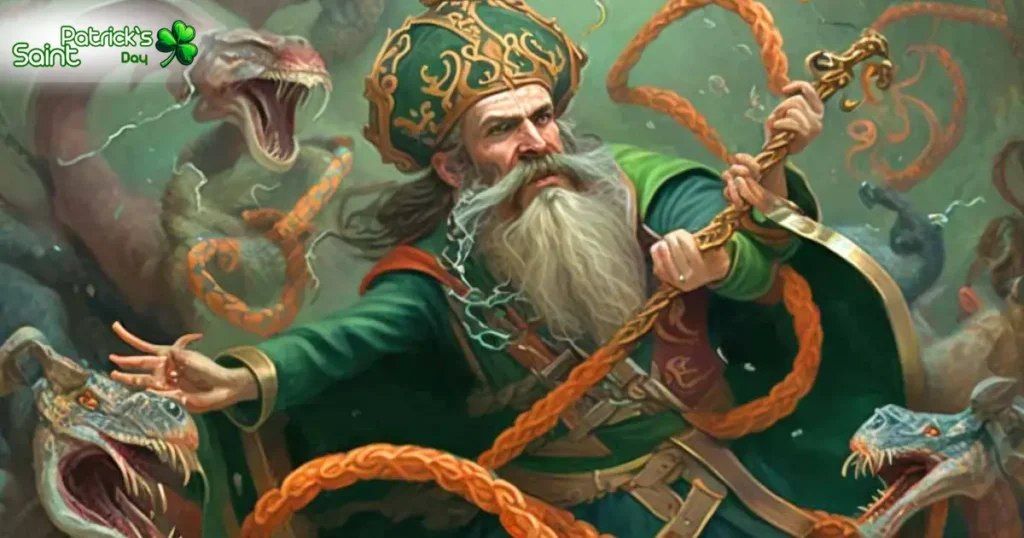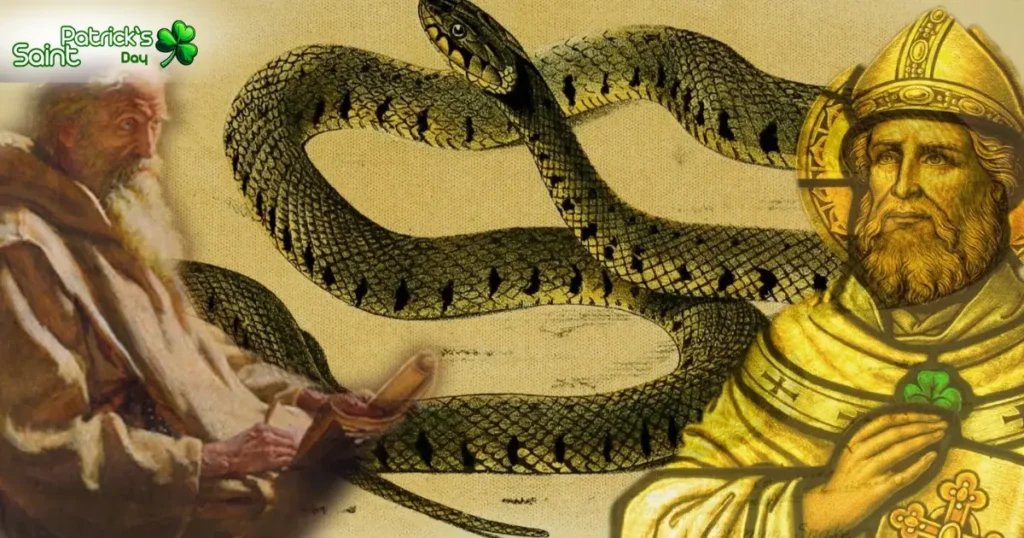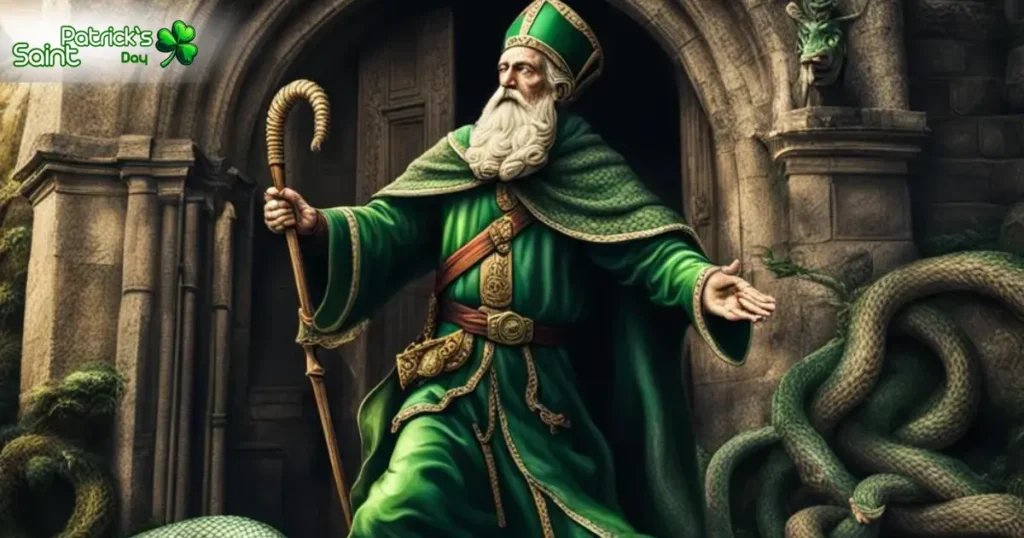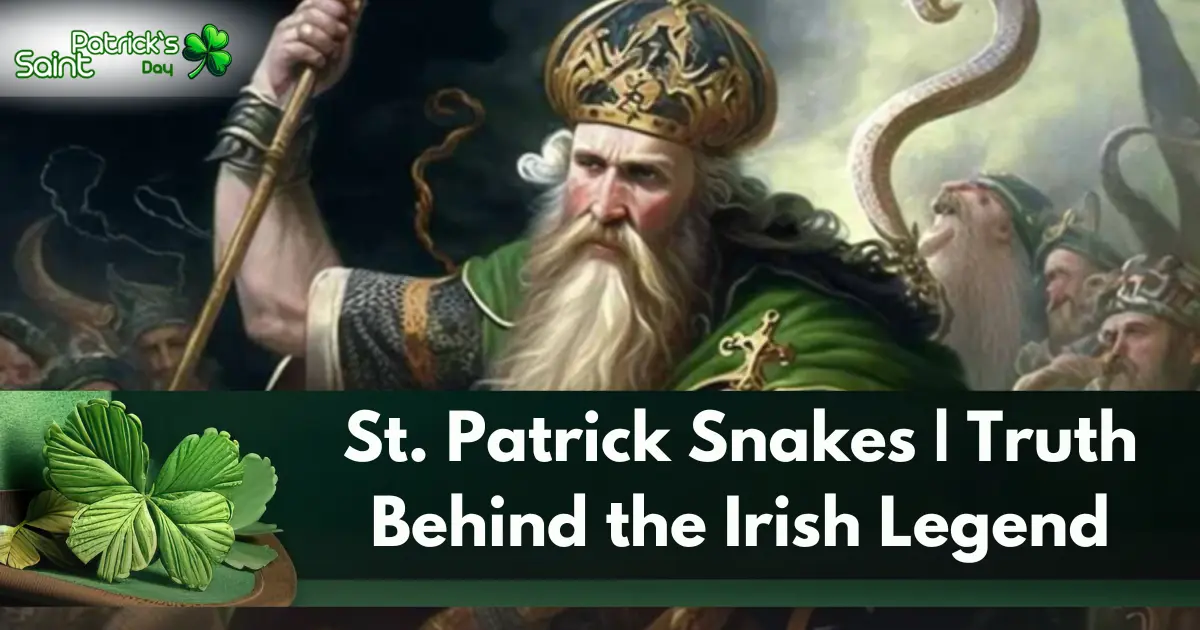Did St. Patrick really drive snakes out of Ireland? The truth is, Ireland never had snakes. The story is a symbolic myth rather than a historical fact.
The Legend of St. Patrick Banishing Snakes

Who Was St. Patrick?
St. Patrick is known as the patron saint of Ireland, credited with spreading Christianity across the country in the 5th century. He was born in Roman Britain but was kidnapped by Irish raiders and enslaved. After escaping, he later returned as a missionary to convert the Irish to Christianity.
The Famous Snake Story
According to legend, St. Patrick banished all the snakes from Ireland, driving them into the sea after they attacked him during a 40-day fast. This story has been widely told, especially on St. Patrick’s Day, celebrated every March 17th.
Did Ireland Ever Have Snakes?
Scientists confirm that Ireland never had native snake species. Here’s why:
- Geographical Isolation: After the last Ice Age (around 10,000 years ago), Ireland became separated from mainland Europe.
- Climate Unsuitability: Cold and damp conditions made it an unsuitable habitat for snakes.
- Fossil Records: No prehistoric snake fossils have ever been found in Ireland.
What Do “Snakes” Symbolize?
Many experts believe that the “snakes” were a metaphor rather than actual reptiles.
- Symbol of Paganism: The snakes may represent the pagan religions and Druidic practices that St. Patrick helped replace with Christianity.
- Christian Allegory: In Christianity, the snake is often associated with evil or temptation, similar to the story of Adam and Eve in the Bible.
The Origins of the Snake Myth
The first written records of this story appeared centuries after St. Patrick’s death, around the 12th century.
- Medieval Writers: These stories may have been added later to enhance St. Patrick’s reputation.
- Merging of Legends: The tale could have been influenced by other religious stories of saints performing miracles.
How the Snake Myth Became Popular

The story of St. Patrick driving out snakes became widely known through oral tradition and religious texts written centuries after his death. But how did this legend spread so widely?
- Medieval Christian Writers: Monks and religious scholars in the 12th century recorded the story, associating it with St. Patrick’s miracles.
- Symbolic Interpretation: The legend fit well with the Christian narrative of good vs. evil, making it a powerful story for religious conversion.
- St. Patrick’s Day Celebrations: Over the years, the myth became deeply linked to St. Patrick’s Day, further spreading through folklore, storytelling, and cultural traditions.
Scientific Evidence Against the Snake Story
While the legend is captivating, scientific and historical evidence debunks the idea that St. Patrick physically removed snakes from Ireland.
- Ireland’s Climate and Geography
- Even today, snakes struggle to survive in colder climates.
- Countries like New Zealand and Iceland also lack native snake populations due to similar geographical isolation and climate conditions.
- Paleontology and Fossil Records
- No fossilized snake remains have ever been found in Ireland.
- Research suggests that Ireland has been snake-free for over 10,000 years, long before St. Patrick’s arrival.
- Comparison with Neighboring Countries
- Britain, which was once connected to Europe, does have snakes.
- Ireland separated from Britain around 12,000 years ago, cutting off any snake migration.
What Role Did St. Patrick Really Play?
Though the snake banishing story is a myth, St. Patrick’s real contributions to Ireland’s history were significant.
1. Spreading Christianity in Ireland
- St. Patrick converted many Irish people to Christianity and played a role in replacing pagan traditions.
- He is credited with introducing the Shamrock as a symbol of the Holy Trinity (Father, Son, and Holy Spirit).
2. Establishing Churches and Schools
- He helped set up monasteries, churches, and religious institutions, which became essential in shaping Irish Christian culture.
3. Writing Religious Texts
- St. Patrick left behind two key texts:
- Confessio – An autobiography detailing his spiritual journey.
- Letter to the Soldiers of Coroticus – A plea against the mistreatment of Christian converts.
Does the Snake Myth Still Matter Today?

Even though snakes never lived in Ireland, the legend continues to hold cultural and symbolic value.
- Religious Influence: Many Christians still view St. Patrick as a spiritual figure who “cleansed” Ireland of evil.
- Tourism and Folklore: The story adds mystique to Ireland’s history and attracts visitors curious about the legend.
- Symbolism in Irish Culture: St. Patrick’s role in Christianizing Ireland remains an important part of Irish identity.
What Other Animals Are Missing from Ireland?
While snakes are famously absent from Ireland, they’re not the only missing species. Other animals that never made it to Ireland include:
- Moles – Found in Britain but never migrated to Ireland.
- Weasels – Their absence is another example of how isolation affected Ireland’s wildlife.
- Native Lizards – While Ireland has one species of lizard, no large reptiles ever settled there.
This further proves that Ireland’s natural history made it impossible for snakes to have ever been there, reinforcing the idea that St. Patrick’s legend was symbolic rather than literal.
How St. Patrick’s Legacy Lives On
Despite the myth of snake-banishing being disproven, St. Patrick’s influence remains strong in Ireland and beyond.
1. St. Patrick’s Day Celebrations
- Celebrated worldwide every March 17th, honoring his role in spreading Christianity.
- Parades, feasts, and green-themed events take place in Ireland, the U.S., Canada, Australia, and other countries.
2. Symbols of St. Patrick
- The Shamrock – Used to teach about the Holy Trinity in Christianity.
- The Celtic Cross – A religious and cultural symbol often linked to St. Patrick’s missionary work.
3. Tourism and Irish Identity
- Visitors come to historical sites like St. Patrick’s Cathedral and Croagh Patrick (his pilgrimage mountain).
- The legend remains an important part of Irish folklore, even if it’s not historically accurate.
Conclusion
The legend of St. Patrick and the snakes may not be historically accurate, but it remains a fascinating part of Irish heritage. Whether viewed as a metaphor for religious transformation or simply an entertaining folktale, the story continues to capture people’s imaginations worldwide.
FAQs
No, there is no scientific evidence that snakes ever existed in Ireland. The story is a myth that likely symbolizes the spread of Christianity.
Ireland has been geographically isolated since the last Ice Age. This prevented snakes from migrating, and the cold climate made survival difficult.
Many scholars believe the snakes represent pagan religions that St. Patrick helped replace with Christianity. The legend is metaphorical, not literal.
The myth became famous through medieval writings, religious storytelling, and St. Patrick’s Day celebrations, where it was passed down over generations.
His real legacy includes spreading Christianity in Ireland, building churches, and shaping Irish religious culture—not driving out actual snakes.

